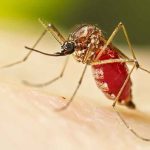Imphal: In an ongoing effort to monitor migratory bird populations, the Central Forest Division, in collaboration with Wildlife Explorers, Manipur, ‘successfully’ conducted the annual migratory bird census at Lamphelpat, Imphal West.
This year’s census followed last year’s trend of documenting the arrival of immigrant bird species to the region, emphasizing the importance of preserving Manipur’s natural habitats, said an official statement released on Thursday.
The census was led by Kiranjit Yumnam, range Forest officer from Sadar West Range, Central Forest Division. The dedicated team, including volunteers from Wildlife Explorers, Manipur, worked together to identify and count the migratory birds that have made their way to Lamphelpat this winter season, it added.
The team documented over 30 species of migratory birds, adding valuable data to the ongoing study of bird populations in the region. The efforts were supported by the Water Resources department, which played an integral role in ensuring the smooth execution of the census, particularly in managing the water bodies around Lamphelpat, which serve as vital habitats for these migratory species.
“We are excited to see a diverse range of migratory species returning to Lamphelpat,” said Vikram Suresh Nadhe, DFO Central Forest Division. “This census is a vital part of our ongoing conservation efforts, and we are grateful for the collaboration with Wildlife Explorers and the support from the Water Resources Department.”
Lamphelpat, known for its vast wetlands, is an important stop for many migratory birds traveling from colder regions. The census provides valuable insights into the health of these bird populations and the environmental factors that influence their migration patterns.
With the continuous collaboration between local conservation groups, government departments, and volunteers, the annual census has become a significant event in Manipur’s environmental calendar, helping to ensure the protection of the region’s biodiversity.
As the migratory birds settle into their seasonal habitats, the census data will be analyzed further to monitor trends and potential threats to their populations, providing a better understanding of the dynamics of the region’s ecosystem.











